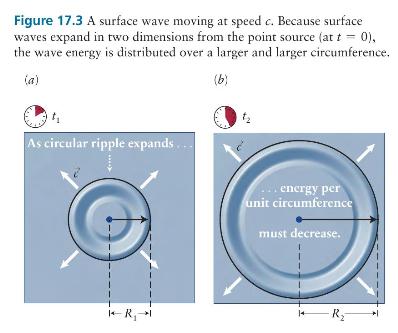Let (t_{2}=2 t_{1}) in Figure 17.3. (a) How does (R_{1}) compare with (R_{2}) ? (b) If the
Question:
Let \(t_{2}=2 t_{1}\) in Figure 17.3.
(a) How does \(R_{1}\) compare with \(R_{2}\) ?
(b) If the energy in the wave is \(E\) and there is no dissipation of energy, what is the energy per unit length along the circumference at \(R_{1}\) ? At \(R_{2}\) ?
(c) How does the energy per unit length along a wavefront vary with radial distance \(r\) ?

Fantastic news! We've Found the answer you've been seeking!
Step by Step Answer:
Related Book For 

Question Posted:





